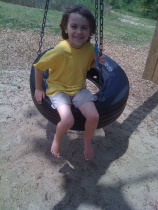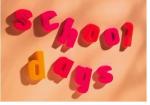There are many fun ways to incorporate oral-motor “heavy work” into your child’s sensory diet. The activities you choose should be fun for your child! The most important consideration is to choose an activity in which your child is SUCCESSFUL and then make it more difficult as his muscles get stronger. You wouldn’t want to begin your first ever gym session by lifting a 100lb weight!
Here are a few fun things to try:
-use a straw to blow a cotton ball or small pom-pom
-blow bubbles into a dish pan of water with liquid soap. Watch your little one laugh when the bubbles form in the water as a result of their hard work of blowing! *Of course, make sure they don’t drink the water 😉
-hold a cotton ball in your hand or place it on the edge of the table and have him blow it off. Make a silly sound as it falls
-whistles of all sizes are fun, each differently shaped whistle changes the muscles used by the mouth, so be sure to provide a variety of sizes for super great exercise
-sucking on candy canes of different flavors is a super activity during the holidays. Not only does it provide work for the oral muscles, but it provides many taste experiences.
-use pixi sticks and place their contents around the child’s mouth at different places, allow the child to use only his tongue to lick it off in front of a mirror
-straws of different sizes can be placed into your child’s favorite drinks
**REMEMBER** the smaller the straw, the harder the oral muscles will work to get the air out. Begin with a larger, straighter straw and work down to a smaller, curvier one.
Post some of your favorites to share.
Let me know how these activities work for your child! For more information on oral motor, sensory processing, and anything OT related, purchase our book, The Pocket Occupational Therapist.
By- Cara Koscinki MOT, OTR/L
Author of The Pocket Occupational Therapist- a handbook for caregivers of children with special needs. Questions and answers most frequently asked to OTs with easy to understand answers and fun activities you can do with your child. Order anywhere books are sold.
 Visit our website at www.pocketot.com for more information about OT, FREE handouts and resource page. Also click on the link to the right for more information on our store with downloadable handouts, cards, and lessons for children of all abilities!
Visit our website at www.pocketot.com for more information about OT, FREE handouts and resource page. Also click on the link to the right for more information on our store with downloadable handouts, cards, and lessons for children of all abilities!










